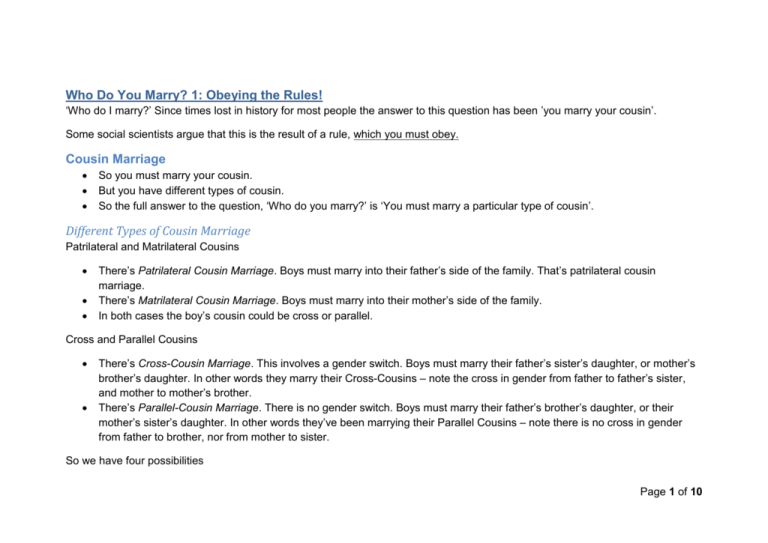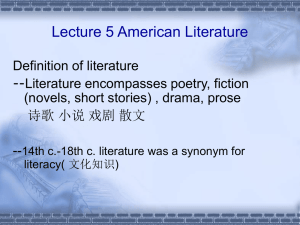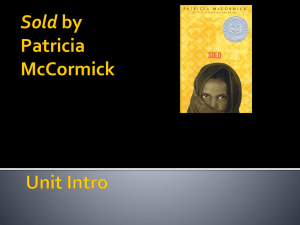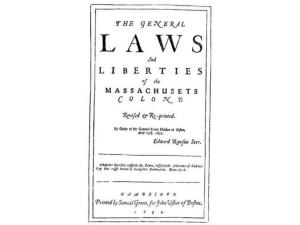here
advertisement

Who Do You Marry? 1: Obeying the Rules! ‘Who do I marry?’ Since times lost in history for most people the answer to this question has been ’you marry your cousin’. Some social scientists argue that this is the result of a rule, which you must obey. Cousin Marriage So you must marry your cousin. But you have different types of cousin. So the full answer to the question, ‘Who do you marry?’ is ‘You must marry a particular type of cousin’. Different Types of Cousin Marriage Patrilateral and Matrilateral Cousins There’s Patrilateral Cousin Marriage. Boys must marry into their father’s side of the family. That’s patrilateral cousin marriage. There’s Matrilateral Cousin Marriage. Boys must marry into their mother’s side of the family. In both cases the boy’s cousin could be cross or parallel. Cross and Parallel Cousins There’s Cross-Cousin Marriage. This involves a gender switch. Boys must marry their father’s sister’s daughter, or mother’s brother’s daughter. In other words they marry their Cross-Cousins – note the cross in gender from father to father’s sister, and mother to mother’s brother. There’s Parallel-Cousin Marriage. There is no gender switch. Boys must marry their father’s brother’s daughter, or their mother’s sister’s daughter. In other words they’ve been marrying their Parallel Cousins – note there is no cross in gender from father to brother, nor from mother to sister. So we have four possibilities Page 1 of 10 Matrilateral Cross-Cousin Marriage. Boys must marry their mother’s brother’s daughter. Patrilateral Cross-Cousin Marriage. Boys must marry their father’s sister’s daughter. Patrilateral Parallel-Cousin Marriage. Boys must marry their father’s brother’s daughter. Matrilateral Parallel-Cousin Marriage. Boys must marry their mother’s sister’s daughter. And here we have our first puzzle for Western Social Scientists as they found out about the marriage practices of North African and Oceanic peoples, and others beside. Out of the four possibilities: 1 Matrilateral Cross-Cousin marriages are common. 2 Patrilateral Cross-Cousin marriages are rare. 3 Patrilateral Parallel-Cousin marriages are exceptional. 4 Matrilateral Parallel-Cousin marriages are exceptional. Why’s that? Are People Obeying Rules? A widespread and consistent pattern like this surely means that people are obeying rules? But are they? Surely we’re looking at something like the operation of a machine, producing predictable outcomes? But are we? Surely your lap-top or Smartphone, could obey the rule and figure out who it is supposed to marry? But could it really? Well maybe yes: that’s this week’s lecture. Well maybe no: that’s next week’s lecture. Page 2 of 10 Preparing ourselves for the argument that people are obeying rules. Before we look at the argument that you obey a rule which dictates that you must marry a particular sort of cousin, we need some preparation in order to follow the argument. Firstly we need anthropologists’ kinship notation and secondly we need to examine the practice of giving gifts. The Anthropologists’ Kinship Notation. When anthropologists are carrying out an ethnography of a whole society, they are going to ask who is related to whom and how. They use a particular notation to record the results. A triangle means a male A circle means a female An unbroken line means a relationship by ‘blood’. ______________ Horizontally it means a relationship between siblings, as in brother and sister. ________________________ Sister Brother Brother Page 3 of 10 Vertically it means a relationship between parents and children, as in father and son. Father Son An ‘equals’ sign, =, means a marriage = Husband Wife There’s more, but now we have enough of the anthropologists’ notation to move on to the rules argument. Page 4 of 10 However, before we do that, we also need to examine the practice of giving gifts. Giving Gifts: Marcel Mauss and Levi-Strauss Marcel Mauss was the first modern social scientist to argue that gift-giving is a practice which involves obeying rules [Mauss:1990]. The central rule is this (there are other rules): If someone gives you a gift, that places you under an obligation to him. You in turn have to give him a gift to free yourself of that obligation. Mauss was also the first to argue that that a network of gift-giving could bind a society together Gift-receivers are bound to gift-givers in a network of obligations. Levi-Strauss took up this theme [Levi-Strauss 1977]. When a kin group gives a woman in marriage to another kin group, the bride is a gift. She’s a bride-gift. She’s a bride-gift so she places the bride-receivers under an obligation to the bride-givers. She binds the kin groups together in a network of obligations. Bride-Gifts, Rules and Cross-Cousin Marriage We can now solve our key problem: why the following pattern? 1 Matrilateral Cross-Cousin marriages are common. 2 Patrilateral Cross-Cousin marriages are rare. 3 Patrilateral Parallel-Cousin marriages are exceptional. 4 Matrilateral Parallel-Cousin marriages are exceptional. Or at least we’ll do that with the first two. Page 5 of 10 Table 1: Marriage with Mother’s Brother’s Daughter A B = = Mother’s Brother Mother C Father = Mother’s Brother’s Daughter = You = = Son In your generation bride-gifts circulate this way this way: A to B, B to C. The same happens in your son’s generation: A to B, B to C. Page 6 of 10 Matrilateral Cross-Cousin Marriage: Mother’s Brother’s Daughter What does Table 1 show? It uses anthropologists’ notation to show three kin groups, A, B, and C. It shows three generations of each group, from your father’s generation, through your generation, to your son’s generation. It shows the result of Matrilateral Cross-Cousin Marriage rule, where you marry your mother’s brother’s daughter. So what is the result? Group A, the bride givers, send a bride-gift to group B. Group B, the bride-gift receivers, are therefore under an obligation to group A. The same goes for group B and group C. We can also imagine that the same goes for groups C and A, with C sending a bride-gift to A. So group A, this time the bride-gift receivers, are under an obligation to C. This closes the circle, so that A, B and C are bound together by a network of obligations triggered by bride-gifts. (This is known as a “circulating connubium”.) But there’s more to it than that. The obligation triggered by a bride-gift is renewed in each generation, from grandfather to son, from son to grandson. So in each and every generation the rule renews the same network of obligations binding the three groups: the network is stable across generations. And so? This explains part of our key problem. The Matrilateral Cross-Cousin Marriage rule, where you marry your mother’s brother’s daughter, is common because it builds stable networks of obligation between kin groups across generations. That is clearer when we look at the rare Patrilateral Cross-Cousin marriage where you marry your father’s brother’s daughter. Page 7 of 10 Table 2: Marriage with Father’s Sister’s Daughter A B C = = Father’s Sister Father = = Father’s Sister’s Daughter = You = = Your Son’s Sister Son In your generation bride-gifts circulate this way: A to B, B to C In your son’s generation bride-gifts circulate the other way: B to A, C to B Page 8 of 10 Patrilateral Cross-Cousin Marriage: Father’s Sister’s Daughter What does Table 2 show? Again it uses anthropologists’ notation to show three kin groups, A, B, and C. Again it shows three generations of each group, from your father’s generation, through your generation, to your son’s generation. This time it shows the result of Patrilateral Cross-Cousin Marriage rule, where you marry your father’s, sister’s daughter. So what is the result? In your generation, group A, the wife-givers, send a bride-gift to group B. Group B, the bride-gift receivers, are therefore under an obligation to group A. But in your son’s generation group B become the wife-givers sending a bride-gift to group A. Your son’s bride-gift of his sister to group A cancels your group B’s obligation to group A. The two groups are no longer bound by a network of obligations. But there’s more to it than that. The obligation is cancelled every generation, from grandfather to son, from son to grandson. So in each and every generation the rule cancels the network of obligations binding the three groups: the network is unstable across generations. And so? This explains part of our key problem. The Patrilateral Cross-Cousin Marriage rule, where you marry your father’s sister’s daughter, is rare because it only builds unstable ties between kin groups across generations. Page 9 of 10 Do We Obey Rules or do we use Know-How? The Mauss and Levi-Strauss argument is very neat – (we’d call it “elegant”). It tidies up a lot of observations – Matrilateral Cross-Cousin Marriage is common, Patrilateral Cross-Cousin Marriage is rare. That’s because people are obeying rules with different consequences. That seems convincing. But Our theorists, Wittgenstein to the front, argue that we cannot obey rules as Mauss and Levi-Strauss suggest. People can follow rules, but that’s a different matter, involving know-how – knowing how to follow a rule. We’ll take this up next week with Bourdieu’s response to the Mauss and Levi-Strauss argument on marriage “rules” Bibliography Levi-Strauss ( 1977) Structural Anthropology. London: Peregrine. Mauss, Marcel (2001) The Gift: Forms and Functions of Exchange in Archaic Societies. London: Routledge. Page 10 of 10








